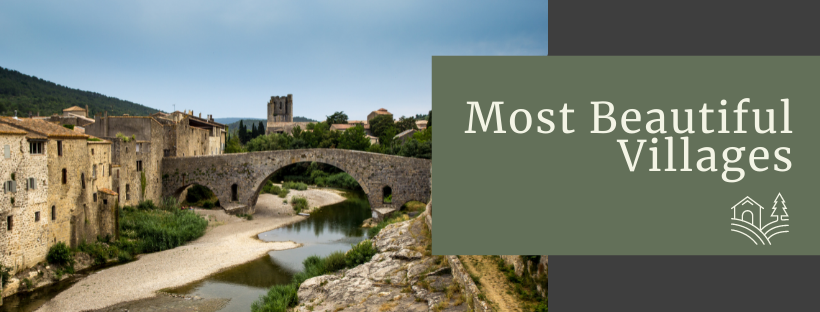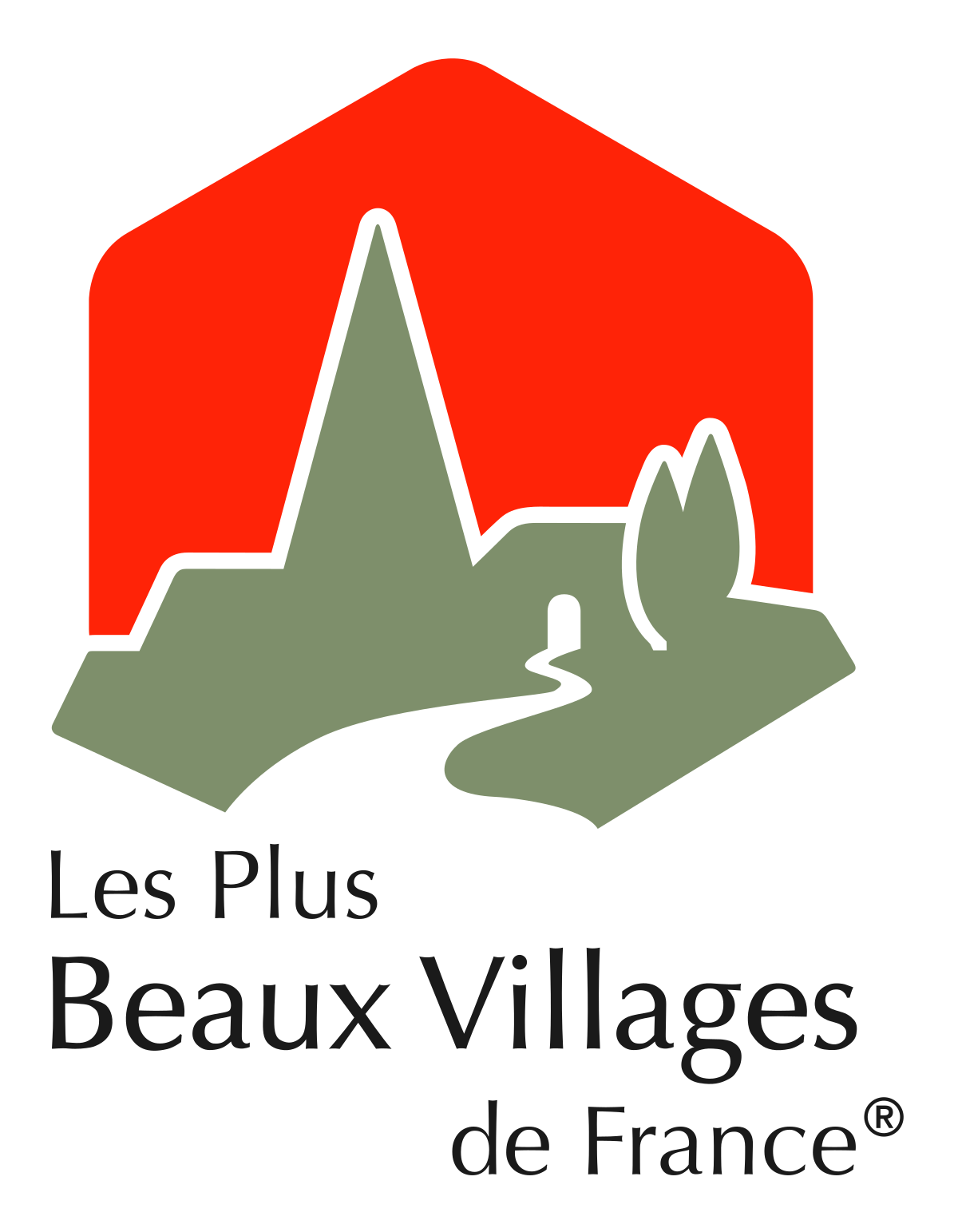
Top 5 Beautiful Villages in the Languedoc
Les Plus Beaux Villages de France (meaning “the most beautiful villages of France”) is an association created in 1982 to protect and promote the rich cultural heritage and appeal of small rural villages.
So when you see a sign for “Les Plus Beaux Villages de France”, you’ll know that the village has passed the strict admission requirements. They firstly have to be rural with less than 2,000 inhabitants. They also need to have least two national heritage sites and thirdly they require local support in the form of a vote by the council
There are now over 160 member villages; 45 of those are in the Occitanie region – here are our Top 5 of those:

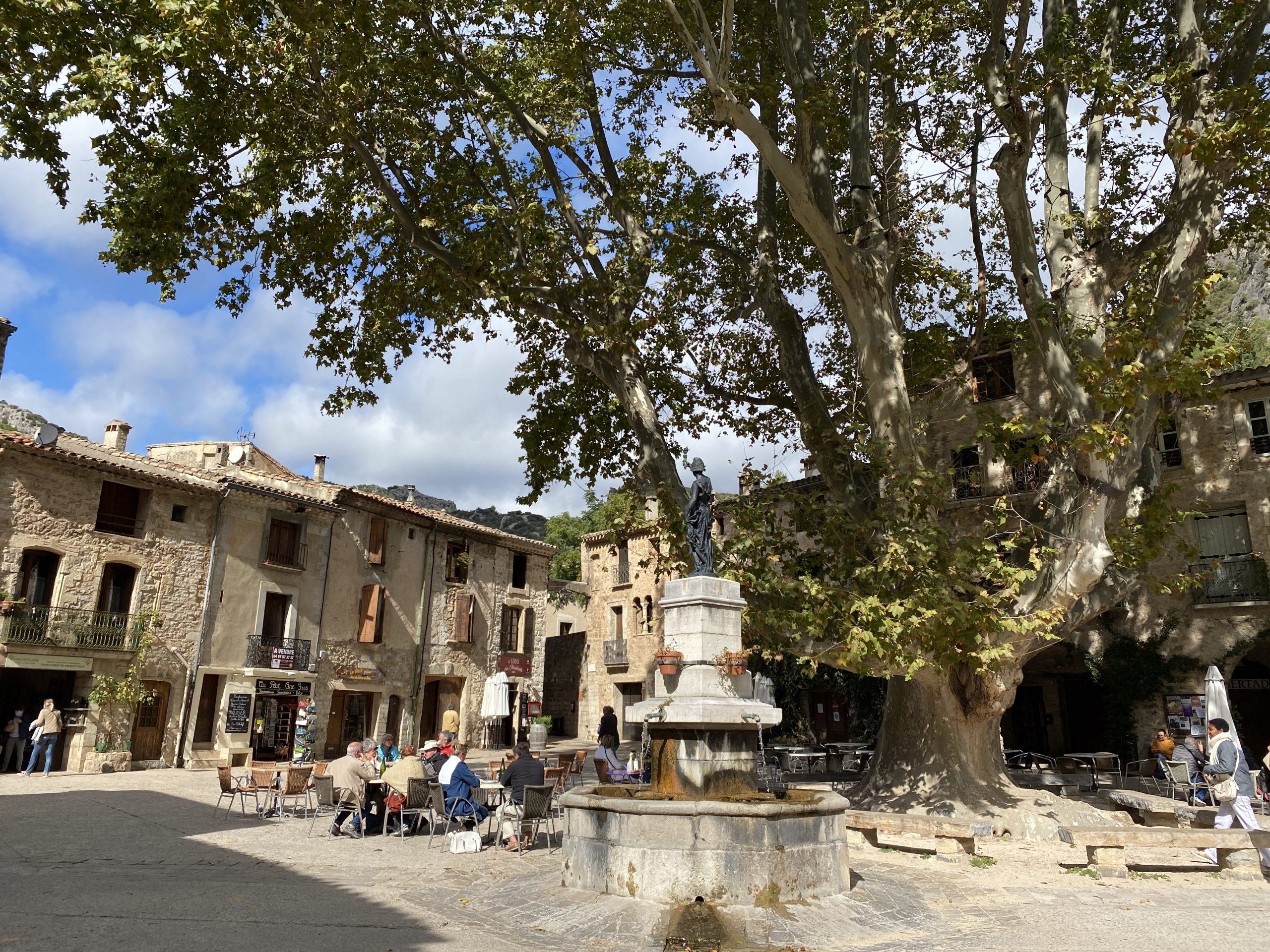
Saint-Guilhem-le-Désert
Situated in the narrow valley of the Gellone river where it meets the steep-sided gorge of the river Hérault, Saint-Guilhem-le-Désert is essentially a medieval village built around the Gellone Abbey located on the Chemin de St-Jacques pilgrim route to Santiago de Compostella.
The perfect time to visit is in spring or autumn to truly appreciate the nature that surrounds the village in the “Parc Naturel Régional du Haut-Languedoc”.
Saint-Guilhem-le-Désert is not only listed as one of the most beautiful villages in France but also as a Grand Site de France and a UNESCO World Heritage Site.
The abbey apparently contains pieces of the True Cross, which has attracted many pilgrims but today you will mainly find tourists, as Saint-Guilhem-le-Désert is a popular destination.
There are many restaurants and shops selling local products in the centre and around the 150-year-old plane tree on Place de la Liberté. It is very easy to while away half a day strolling through the narrow streets of this charming village.
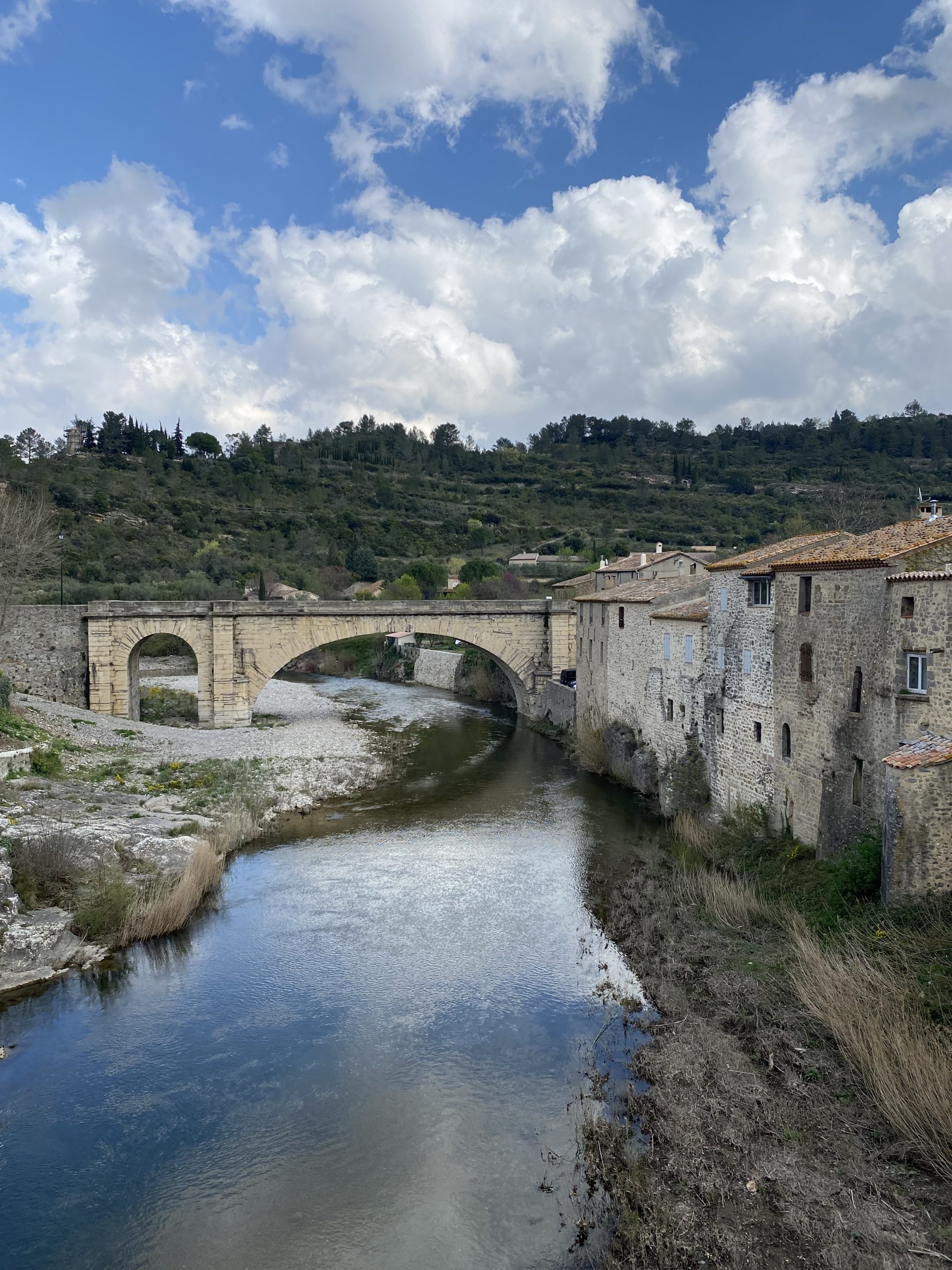
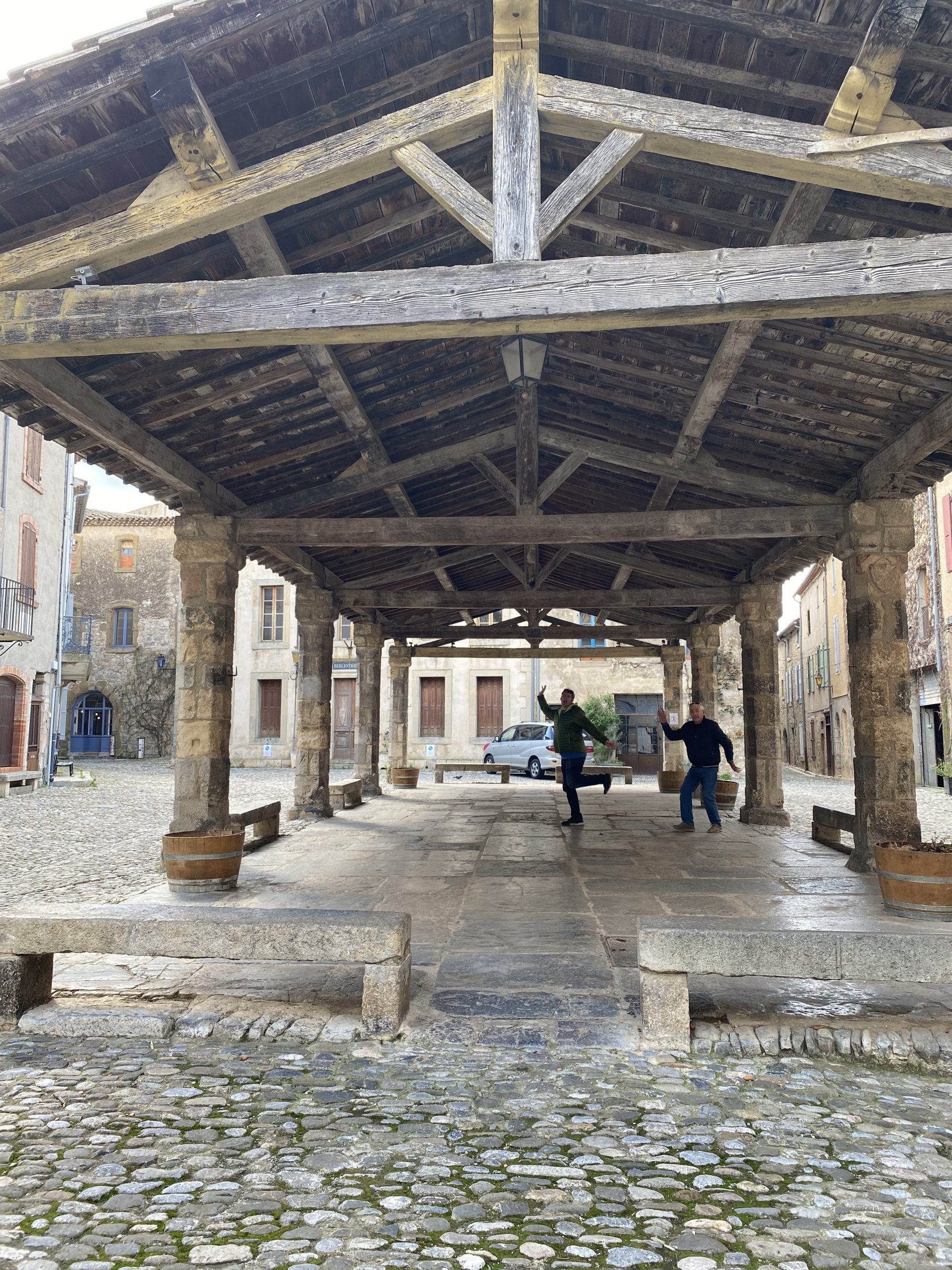
Lagrasse
In a landscape of vineyards and hills, typical of the Corbières region, Lagrasse is crossed by the river Orbieu – the perfect swimming spot during the heat of summer. The river is spanned by a bridge, built in 1303, which links the village to its abbey, an architectural jewel of the medieval period.
Lagrasse, once the cultural capital of the Corbières, like many other ‘Most Beautiful Villages of France’ is well signposted, there is even a route you can follow to see all the highlights.
One of the which is the beautiful covered market, dating from 1315, at the Place de la Halle. Along with the pretty houses dating from the 14th-16th centuries, you will feel like you have gone back in time.
Agriculture, arts and crafts have always been important to Lagrasse. And nowadays you can find producers of fantastic Corbières wine, vinegars, oils and craft beers, along with shops selling baskets, crafts, pottery and art.
On the occasions that I have visited Lagrasse I have found it to be surprisingly quiet – a few tourists wandering around the cobbled streets, but nothing like Carcassonne for example – which is perfect for enjoying its charm.
And if you really want to remember your trip to Lagrasse, we would recommend a meal at Le Bastion – a Michelin-starred restaurant with delicious food at very reasonable prices
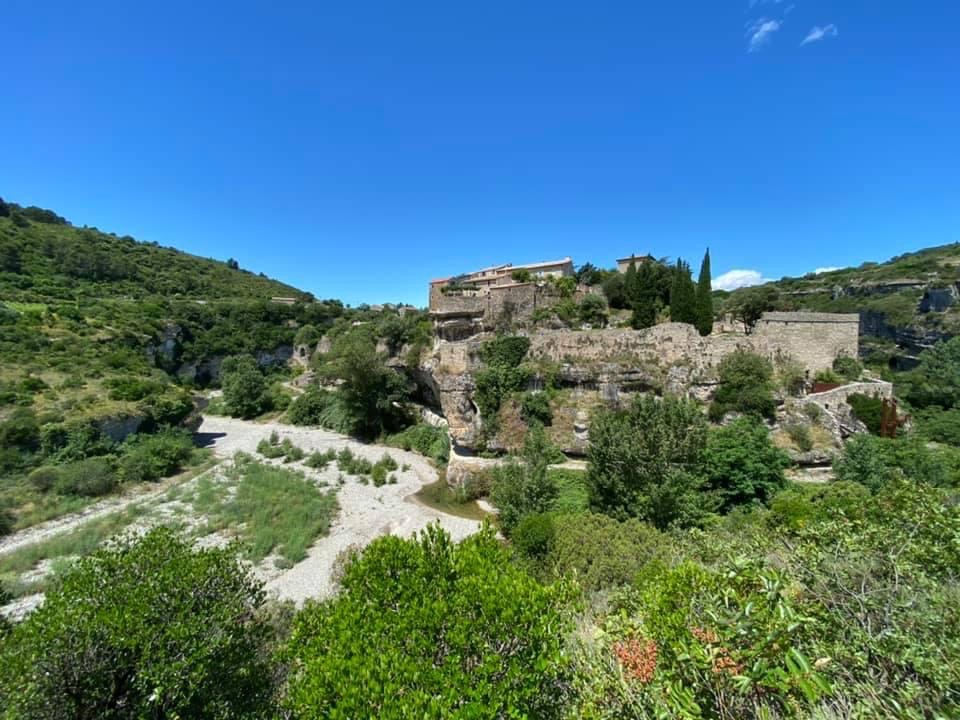
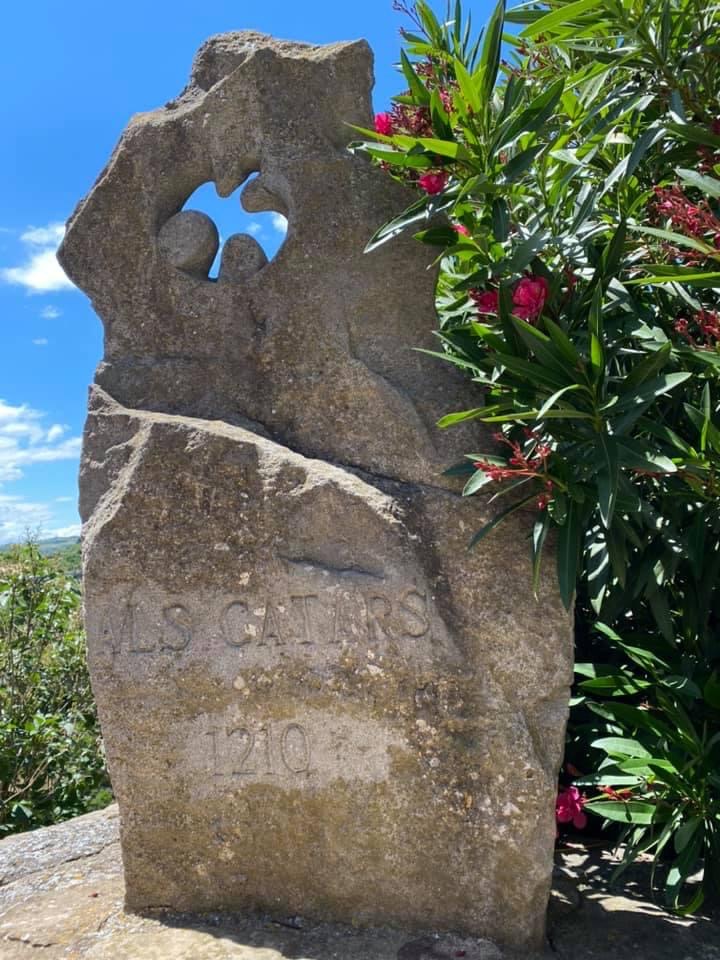
Minerve
It is no wonder that Minerve is officially one of the most beautiful villages in France. Previously an ancient Cathar fortress, surrounding gorges naturally protect the village. These gorges eroded at the place where the two rivers La Cesse and Le Brian meet. The village perches on a high ridge, which offers a naturally strong defensive protection.
However, this position could not stop Simon de Montfort burning to death 140 Cathars who refused to give up their faith in 1210. To remember the Cathar martyrs there is a memorial stone with a dove carved into it near the church.
Minerve is very well-preserved with its winding cobbled streets making it a real joy to visit. However, you can also go on an adventure by exploring the ‘Pont Naturels’, or the naturally formed bridges. To get to them, turn right on the cobbled downward street, called Rue de la Calade, just after you have passed the tower, or ‘La Candela’. Follow the signs, and you will come to the river.
If the river is not too high, you can even go through the tunnels. The small bridge is 110 meters long and the big one 250 meters. Very impressive to see, especially when you think that these natural bridges date back millions of years.
The perfect end to your visit would be a meal in one of Minerve’s wonderful restaurants like Relais Chantovent or Aux 2 Rivières
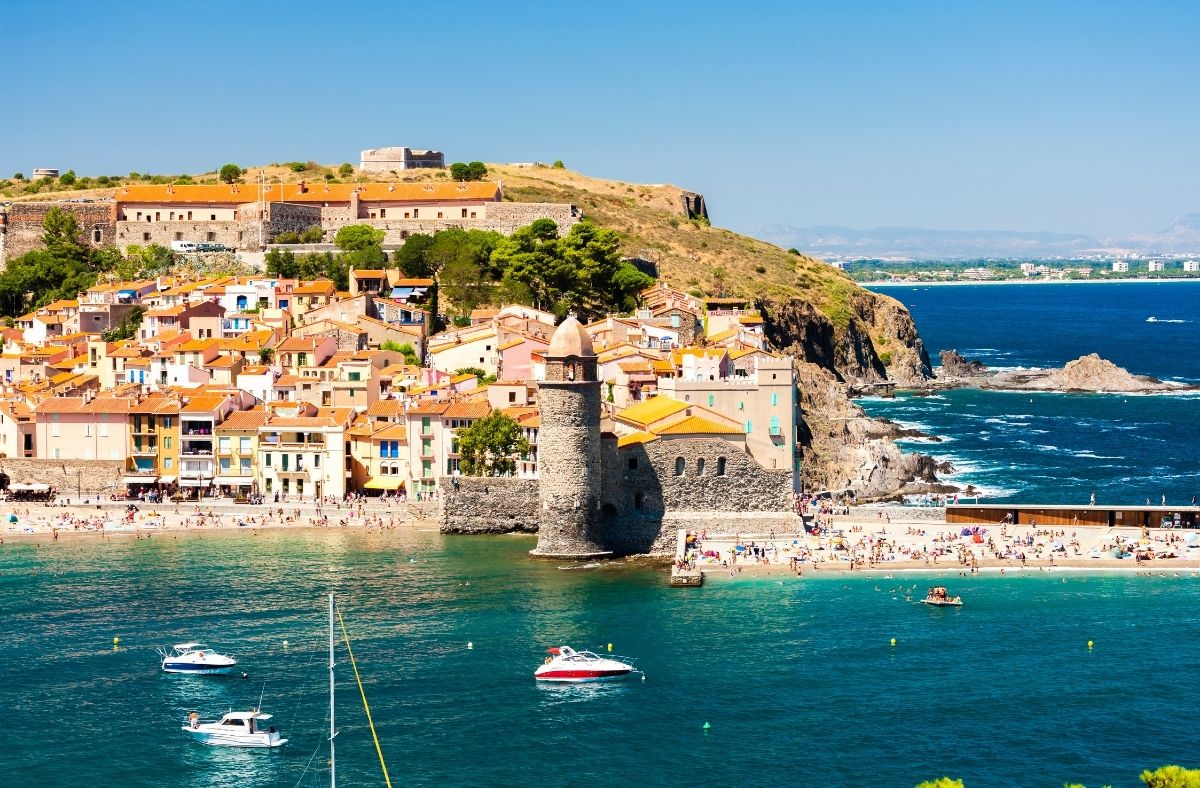
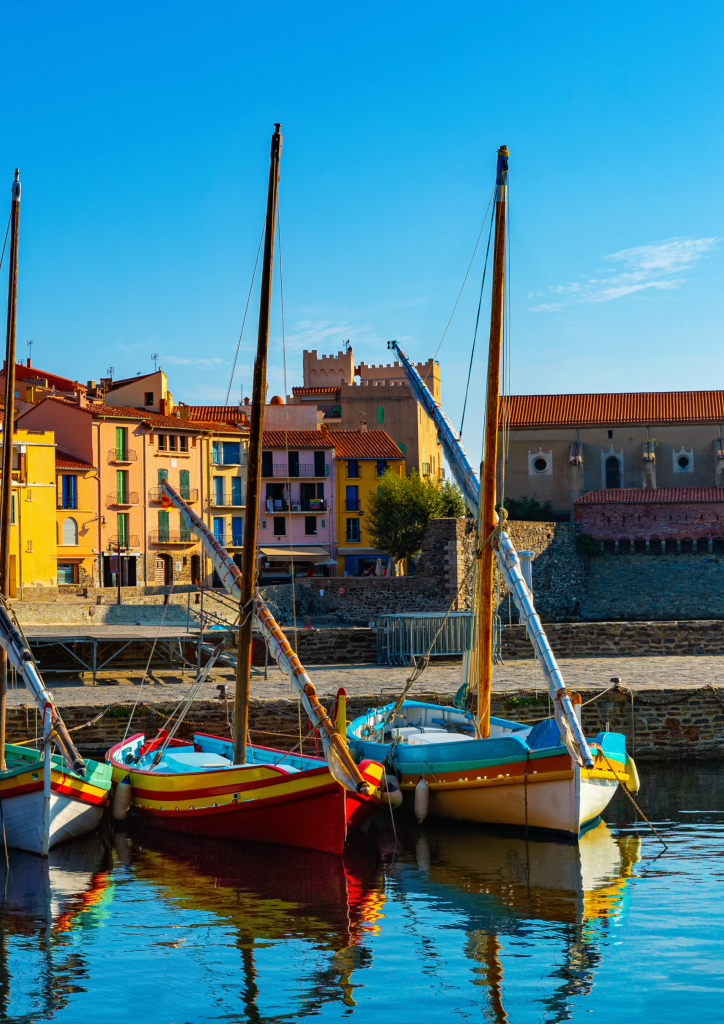
Collioure
Collioure is located on the Côte Vermeille; with its 300 days of sunshine a year it makes for a fabulous yet sometimes busy place to visit. Market day is on Sunday, perfect for strolling and perusing the food and artisan products for sale – but get there early!
Collioure has been an important port of the Mediterranean since ancient times. The Château Royal is mentioned as early as 673. In the centuries that follow, Romans, Barbarians, Arabs, Spaniards and French occupied Collioure, with it becoming definitively French by the end of the 17th Century. The beautiful castle is still in the centre of the town, located on the bay of Ansa de Baleta and is worth a visit.
On the other side of the bay is the church of Notre Dame des Anges. The round bell tower is part of this church and is the symbol of Collioure. You will see this tower depicted everywhere. In the 20th century, a large number of artists including Picasso discovered Collioure. According to Matisse, the sky is nowhere as blue as in Collioure.
Even now the village has an artistic atmosphere. The picturesque old town has enough charming streets and squares with plenty of restaurants, shops and galleries to spend a day or longer… The great part is that you can combine many things: interesting history, tasty food, beautiful art and a dip in the sea.
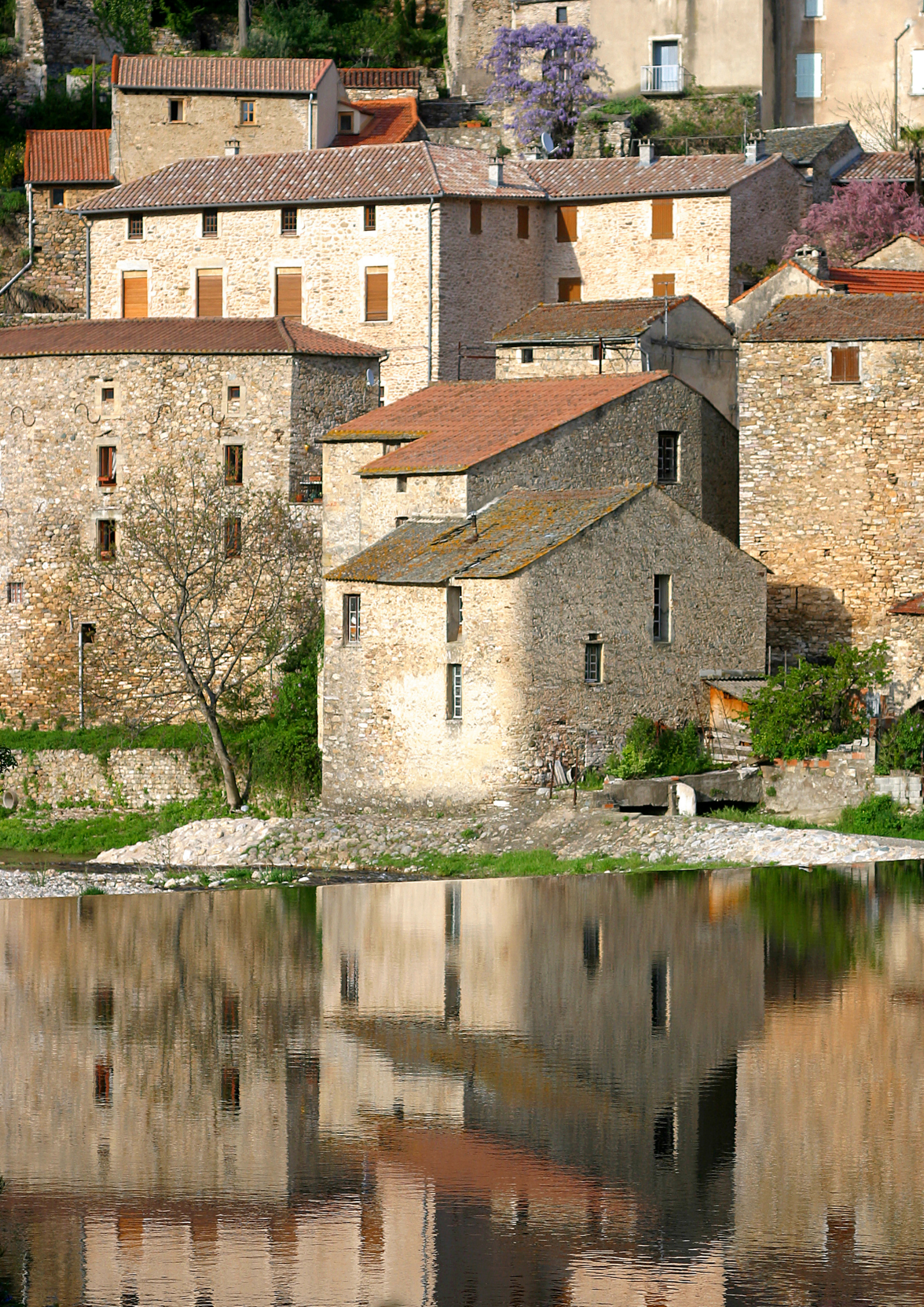
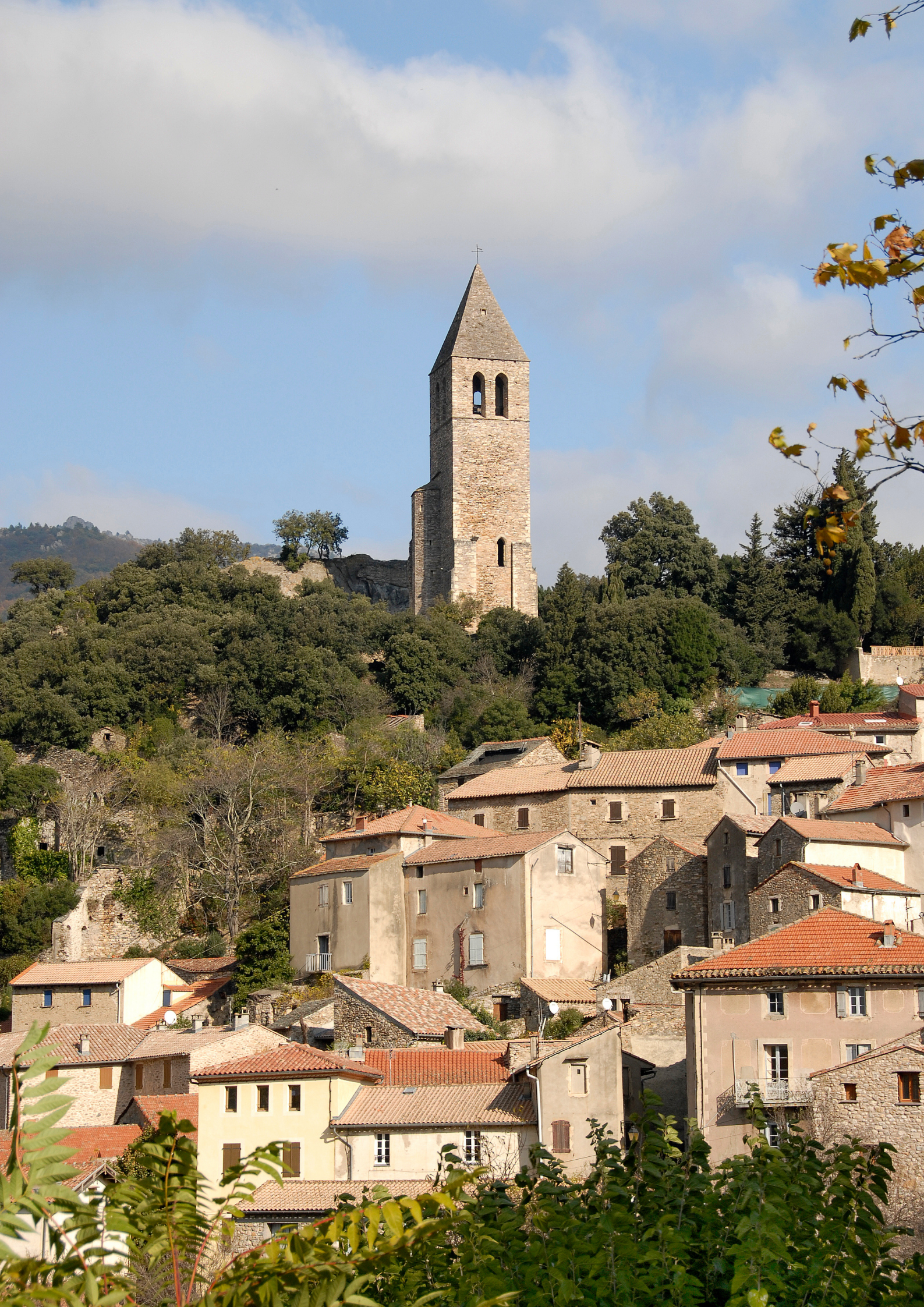
Olargues
From its rocky hill Olargues overlooks the green surroundings of the foothills of the Massif Central. The medieval village is surrounded by chestnut and cherry trees which rub shoulders with vines and olive trees.
The old fortified town is as appealing for this surrounding landscape – a location perfect for outdoor activities as it is for its charming narrow cobbled streets, half-timbered houses and its covered walkways.
The river Jaur almost encircles the entire village, spanned by the ‘Pont du Diable’ (‘Devils Bridge’) dating from the 12th century. The legend goes that the villagers built this bridge by closing a deal with the devil himself.
History tells us that Olargues dates back to the 12th century with the construction of the castle, ramparts and 9 entrance gates. As it lay along the old medieval road between Nîmes and Toulouse, it became an important economic and military town during the Middle Ages. The actual castle no longer exists, but you can still see the remains of the ramparts and the former keep, which was transformed into a bell tower. Stones from the ruined ramparts served to construct the Saint-Laurent church.
You get the best view of Olargues from the terrace of the restaurant Fleur d’Olargues, which serves some excellent lunches and dinners.
If you like hiking – there are several routes and one of them will lead you to the Peiro Escrito, a cave painting dating from the Bronze Age. The area is also great for mountain biking with numerous marked trails suitable for beginners and experienced riders.
More From This Category

Languedoc in the Spring
10 Reasons to Visit the Languedoc in the SpringIf you're looking for a beautiful and diverse region in France to explore, the Languedoc should be at the top of your list. Located in the south, the Languedoc is known for its stunning landscapes, delicious cuisine, rich...

Discover Narbonne
Discover Narbonne: Where History, Culture, and Gastronomy MeetSituated along the banks of the Canal de la Robine, Narbonne boasts a rich history dating back to Roman times. In this guide, we invite you to discover Narbonne's rich tapestry of history, vibrant culture,...
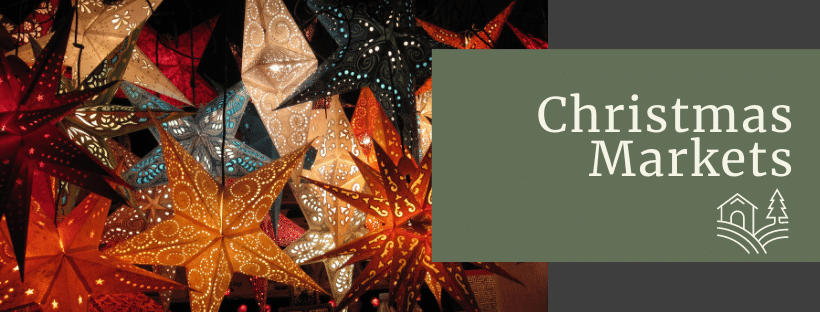
Christmas Markets South of France 2025
Christmas Markets South of France 2025The south of France is not well-known for it's Christmas markets but almost every town and village will have a Christmas market at some stage from mid-November to New Year, but usually just for a day. The big towns and cities,...
Free Guide
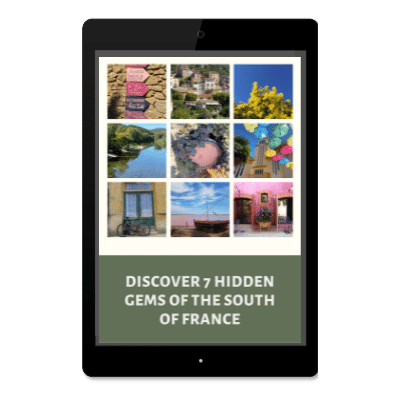
If you’d like more inspiration for your trip to this wonderful area download this guide to 7 hidden gems
Free Guide

To find out about some of our favourite restaurants in the area you can download this handy guide

